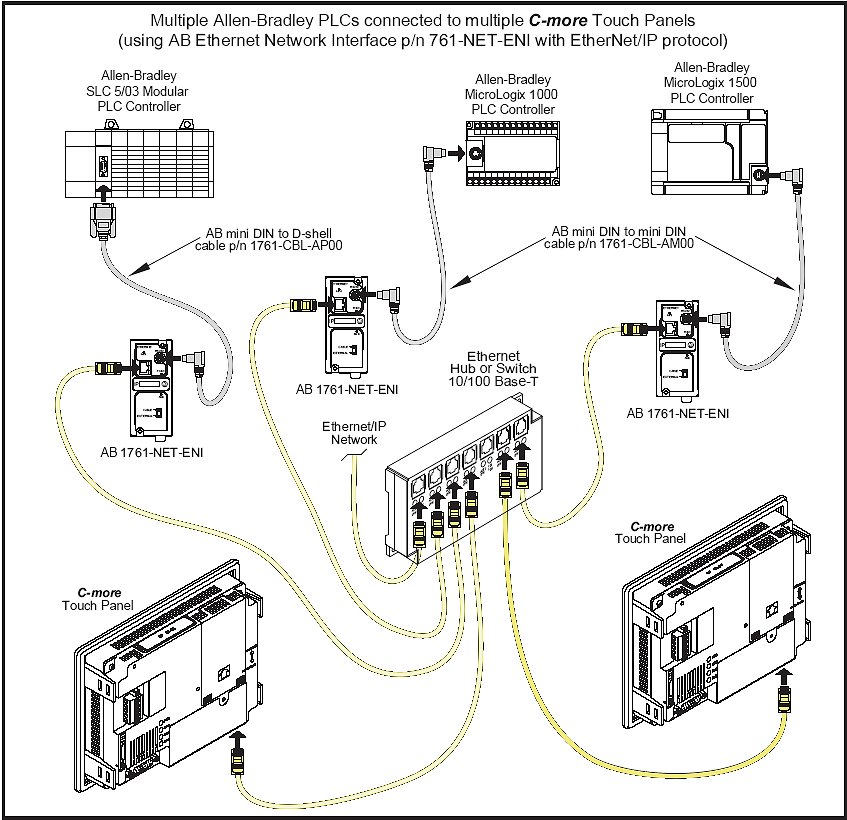AB-DF1 Serial Protocol Overview
Integration Solutions
Chipkin has integration solutions for almost every situation. We specialize in network protocol communications and have over 20+ years of experience. Click for more information:

DF1 Serial Protocol
Protocol used by Allen Bradley factory automation human-machine interfaces.
Link Layer: RS232. Maximum 19200 Baud. 8 data bits, no parity bit, one stop bit. ASCII
encoding.
Used asynchronously, packets are not sent on a planned schedule. Communication can be two-way
simultaneous (full duplex) or master slave polling (half duplex). No guarantee commands will be received in
the same order they were sent.
Communication Layer: Command characters follow ANSI X3.4 standard:
| ASCII | Description | Byte Value |
| SOH | Start of Header | 1 |
| STX | Start of Text | 2 |
| ETX | End of Text | 3 |
| EOT | End of Transmission | 4 |
| ENQ | Enquiry | 5 |
| ACK | Acknowledgment | 6 |
| NAK | Negative Acknowledgment | 15 |
| DLE | Data Link Escape |
16 |
Flow Control: Transmitter sends DLE STX xxxx DLE ETX BCC/CRC to receiver (xxxx is a command string). Receiver responds with ACK for success or DLE NAK for failure. Transmitter sends DLE ENQ if it does not get one of these responses after timeout. If transmitter gets the failure response it retransmits. Retransmitted messages take the form: DLE STX xxxx DLE ETX BCC/CRC Communication commands. Command system is called Programmable Controller Communications Code (PCCC). Four types of commands: Read, Write, Diagnostic, Upload/download. All commands are acknowledged with a reply: Zero for success or an error code. Commands have a priority field. Replies must match the priority of the command they are responding to.
There are too many commands to cover. Refer
to http://literature.rockwellautomation.com/idc/groups/literature/documents/rm/1770-rm516_-en-p.pdf [Chapter 7, p88]
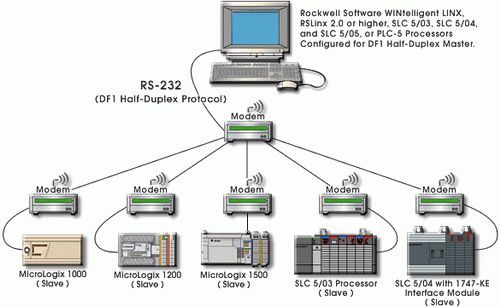
Data Highway Plus – DH+
Peer-to-peer communication through a modified token-passing LAN. 57.6 Kb/s.
DH+ has its own physical layer specification: Baseband shielded twin axial cable.
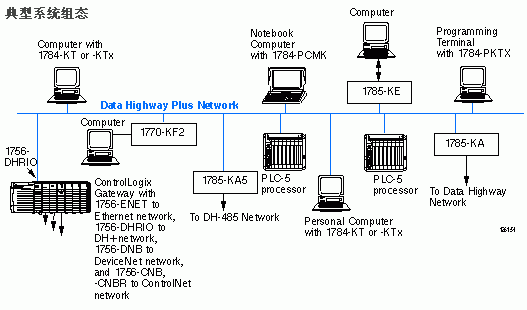
Ethernet/IP (EIP)
Ethernet Industrial Protocol. Only specifies application layer. Uses standard Ethernet and TCP/IP to transmit CIP data. UDP Packets are sent to port 2222 for implicit messaging: Basic IO data Information repeatedly polled TCP Packets are sent to port 44818 for explicit messaging: Uploading/downloading parameters/programsBroadcasts to multiple destinations.
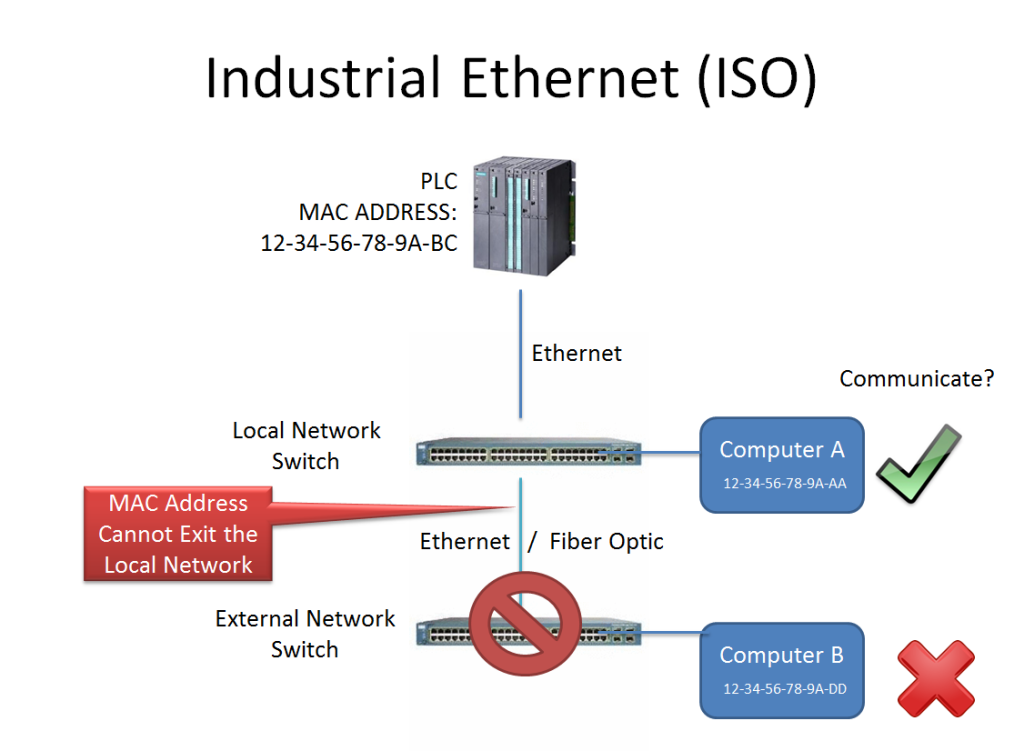
AB CSP
Allen Bradley Client Server Protocol (v4). Also known as AB Ethernet. Uses IP addressing and TCP/IP to carry PCCC commands. Similar to DF1 except using Ethernet instead of RS232. Obsolete.
ControlNet / Fieldbus
Strictly scheduled and highly deterministic. Physical layer signaling uses Manchester code at 5 Mbit/s. Link Layer is designed for cyclic data exchange. It operates in cycles called Network Update Intervals. Each NUI has three phases . 1) scheduled traffic 2) unscheduled traffic 3) maintenance The maximum size of a scheduled or unscheduled ControlNet data frame is 510 Bytes. Application layer is based on CIP which is also used in DeviceNet and IP/Ethernet.
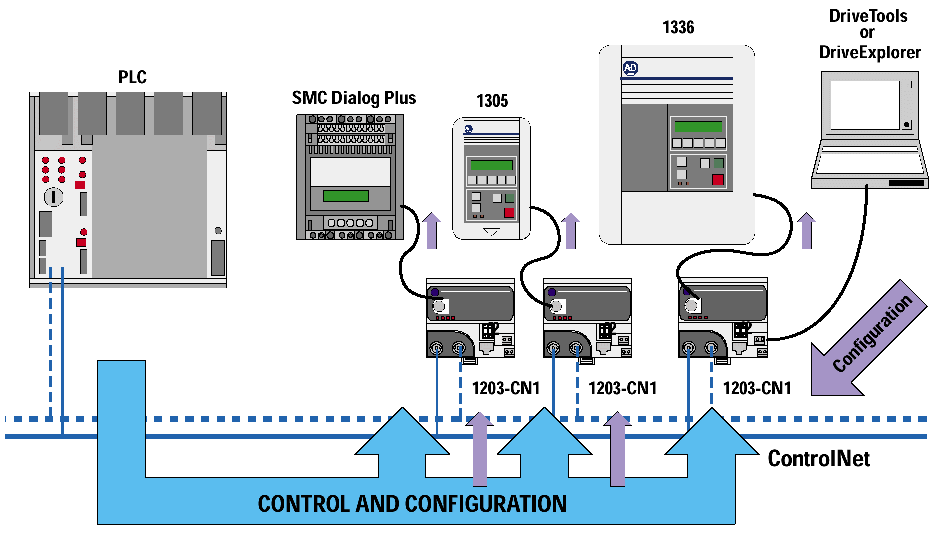
DeviceNet
DeviceNet is an application layer that uses CANBus physical layer and CIP communication layer. CANBus Network supports up to 64 nodes. Maximum 1Mbd data rate. CANBus has low overhead and a simple physical interface but data frames are only 8 bytes long. Message priority is generated automatically by assigning priority to 0 bits. This resolves network conflicts without using bandwidth to transmit priority values.
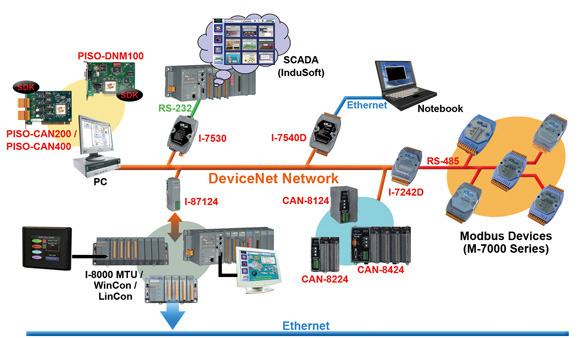
CIP
CIP (Common Industrial Protocol) is an object oriented communication protocol. CIP devices contain objects which can be read and set (when applicable). A thermostat device will have objects representing present temperature, trigger temperature, etc.
Every CIP device is required to implement the following objects:
Identity object.
Vendor ID, Device Type , Product Code , Revision , Status , Serial Number , Product Name, State , Configuration Consistency Value, Heartbeat Interval.
Message Router Object
Path to destination device.
Devicenet object
MAC ID, baud rate
Connection Object
Maximum data length, IO/explicit messaging indicator, time out period length.

